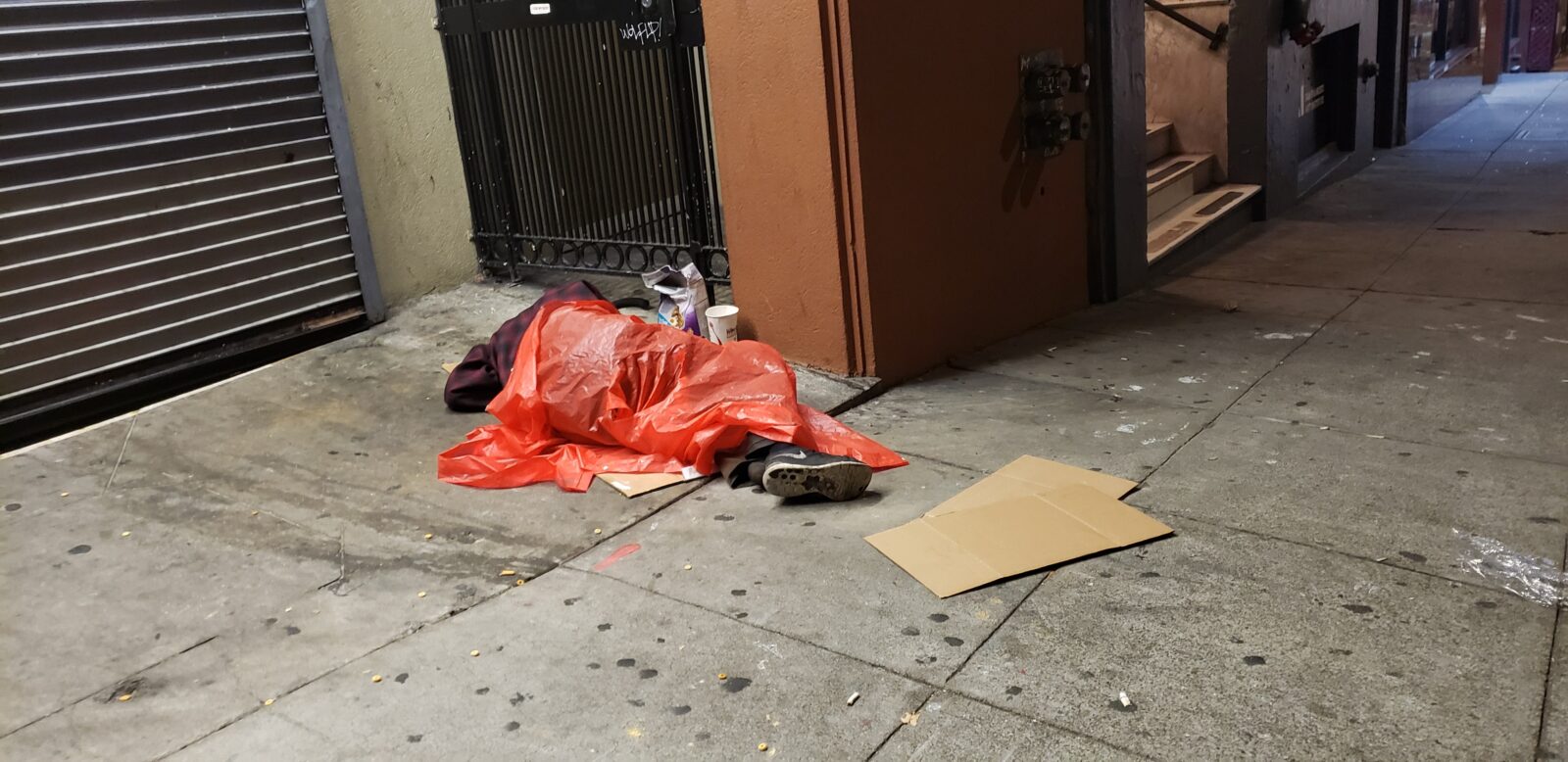Searching for solutions
In July, walking around the fifty blocks of the Tenderloin, San Francisco’s fentanyl epicenter, I often saw notes like this one posted on lampposts: “Mimi—5’, 100 lbs.—we miss you terribly. Please call any family member. Please call 202 [number].”
The Mimis are often hidden in tents, but even for a first-time visitor like me, the dealers and their deals were highly visible. Dealers, often teenagers in clean Nikes, walked alongside potential buyers. They did not just stand at particular corners, as a great streaming television series based in Baltimore, The Wire, showed: These dealers floated up and down a block. Police say they are independent contractors, trying to establish their own clientele, and earning $300 or more on an average day by selling mostly fentanyl but also meth, cocaine and heroin.
Early this month I quoted from the most impressive coverage of homeless reality and heartbreak that I’ve seen in American newspapers, Heather Knight’s columns in the San Francisco Chronicle. Knight reported the big picture but also the broken life of one fentanyl addict, Jessica, and her mom Laurie’s attempts to save her.
Jessica in April of this year received great hospital care but “once released, she was on her own.” No one assured “that she kept up with visits to the methadone clinic, or guided her through her attempt at recovery. Soon, she gave up methadone. She turned back to fentanyl. Knight a few weeks later saw Jessica back in the Tenderloin: “Inside her tent, her skin dirty and covered in wounds, Jessica smoked drugs. She didn’t want to talk.”
And what about Jessica’s mom? She “wonders why the city pays so much money to provide emergency medical care for people like her daughter but doesn’t invest much in their care after discharge.” Knight asked Jessica “if she was ever aware of someone intervening to stop the abuse. ‘Of course not!’ she said, sounding surprised. ‘Why would they?’” Knight: “Because it’s the right thing to do?” Jessica: “’There is no right thing here,’ she said with a sigh. ‘Nobody does the right thing.’”
I met Tom Wolf, a 53-year-old who wants to do the right thing. Wolf underwent foot surgery in 2015 and became addicted to oxycodone. He was a city employee earning $80,000 per year, a husband and father of two, but he started paying hundreds of dollars each day for opioids he would buy at the Tenderloin’s “Pill Hill.”
Wolf stopped working, dived into his life savings, and switched to heroin, which was cheaper: $10 would get him high. He moved into the Tenderloin, often sleeping on a piece of cardboard near the corner of Golden Gate Avenue and Larkin Street. Wolf, whose mother immigrated from Mexico, knows Spanish and would help young Honduran dealers, chavos, wire money to their families at home.
The chavos called Wolf “white-o,” for his skin and aging hair, and gave him heroin in return for his carrying their drugs just in case police would stop and frisk them. (In the unlikely event of arrest, the length of sentences depended on the quantity of drugs they carried.) Chavos showed Wolf pictures of the big houses and new cars they were building in Honduras and buying with drug earnings.
So are chavos the problem? Both Wolf and the police say chavos are just foot soldiers with their own fears: Don’t anger the cartels or talk about drug lords, or you might end up murdered with your body dismembered. The Sinaloa and Jalisco cartels from Mexico are the producers and distributors, and Hondurans just the sellers. The cartels hire human “mules” to move the drugs from Mexico up the west coast. Chavos do the sales and often use wiring services such as MoneyGram to send home earnings to relatives in Honduras.
For them it’s not personal, it’s strictly business, but the results of their labors are personal. From 2017 to 2022 San Francisco’s non-fentanyl overdose deaths remained fairly steady, in the 169-200 range— but fentanyl deaths went from 36 in 2017 to six times as many, 241, two years later. They doubled once again, to 475, in 2021. Use of Narcan/suboxone, a lifesaver if applied immediately following an overdose, went from about one thousand in 2017 to two thousand in 2019 to four thousand in 2020 and eight thousand in 2021.
So the desire for “harm reduction” is good, but when we normalize drug use we get more of it. There is a case for widespread Narcan distribution, although I do wonder if some addicts are willing to walk the fentanyl tightrope because they think a safety net waits beneath them. (Maybe that’s imputing to them more rationality than they have.) But San Francisco is on track in 2023 to set a record of 800+ for overall overdose deaths, so passing out free drug paraphernalia is not solving the problem.
(to be continued)
